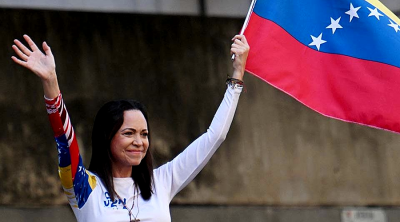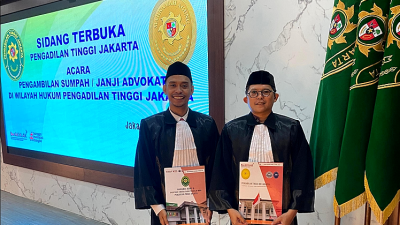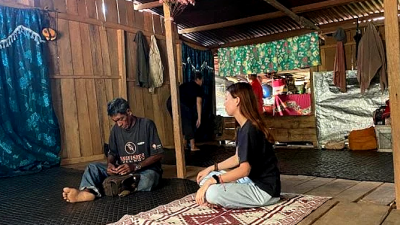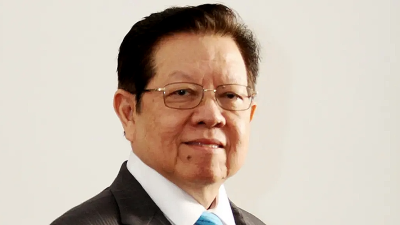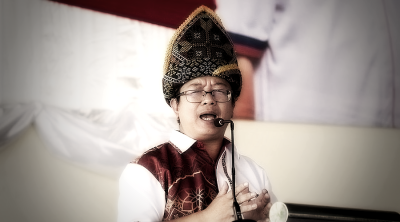My sister, who teaches high schoolers history in a Delhi school is partly responsible for the nomination of Ajay Banga to lead the World Bank.
I know that sounds weird but let me explain.
No, she does not know President Biden, or Ajay Banga for that matter. But she teaches a kind of history that is not widely taught outside India.
It is a history that stretches beyond the national frontiers of a single country and expands the mind.
It is a global sweeping timeline that takes in the assassination of Archduke Ferdinand and the coronation of William of Orange; it links the fiscal military might of the British Raj in India with their machinations in Central Asia.
It teaches Indian students that there is a whole big, wide world out there beyond India which is open to critical analysis and linkages.
It helps them see the arc of history as it should be seen – as a seamless whole.
And my contention is that this outward gaze in Indian education, the desire to understand the world as an interconnected whole has led to not just holistic education but a whole generation of leaders in the corporate world and global stage, of whom Banga is only the latest.
The Indian immigrant success story is well documented, particularly in the US.
What connects Sundar Pichai of Google, Satya Nadella of Microsoft, Arvind Krishna of IBM, Shantanu Narayen of Adobe, Rakesh Kapoor of Reckitt, Indira Nooyi of Pepsi, Leena Nair of Chanel and Raj Subramaniam of Fedex, among many other successful Indians, is the fact that their basic education, high school and undergraduate degree, was done in India.
Many of them came to the US for a post graduate degree but their foundational knowledge and world view was shaped by early education in India.
Given the fact that they are of a certain age, I can assume their school syllabus was much like mine.
Certainly, when I was growing up in India, there was an important global component to History, Geography and Economics. In fact all social science disciplines had a global angle in addition to the Indian one.
So, we studied the Rhine and the Rhone in addition to the Ganga and the Godavari, we learned about the Prairies and the Steppes as well as the Deccan plateau and we could reel off the causes of the first world war as easily as we could account for the Nawab of Bengal’s defeat in the Battle of Plassey.
When I contrast this with the way social science syllabi are created in middle and high schools in the US and the UK, I find there is a breadth of vision that is totally missing in the West.
So, American high-schoolers will learn in detail about the civil war in the US and know which general led the confederate army; but very rarely will there be a comparative stream to see this in context by studying world history.
Comparative courses are offered at college level but because it is specialized education at this stage, the courses are pretty niche.
There are no basic broad stroke history and geography lessons as in India.
My Western-educated children call Trivial Pursuit an Indian school exam, and with good reason.

Anyone going through the Indian system will know the name of the highest mountain in the world (in feet and meters), the length of the longest river, the main crops of Brazil, the highest value export item of Belgium and much, much more.
While all this knowledge is not by itself useful for running a company, leadership roles require a breath of vision, a global perspective and an ability to join the dots in an increasingly inter-connected world. And the Indian education system certainly gives that.
Never have I realized the value of my early education more than now – when as a fellow at Stanford University, I take classes with very smart young people from a different school system.
I find myself speaking very differently from my American classmates and to their credit, they respect the diversity I bring to the classroom.
In a recent British history class, when someone wondered why Christians (Catholics and Protestants) were fighting each other in Ireland, I pointed to the pattern of the British empire: conquer, divide by religion and rule.
And when it gets too messy, partition and leave. They did this in India and Pakistan, in the Middle East and in Ireland.
The class digested this in thoughtful silence.
Similarly, when we were studying transitioning gender in a Feminism class and the conversation drifted towards choice and free will, I pointed out that the hijras of India have no free will or choice in who they are.
A baby with deformed genitals (a source of shame to the family) is given away to the eunuchs and has to earn a life through begging. This is less about gender and choice and more about poverty and lack of choice.
On another occasion, our class was animatedly discussing the gender of smart household devices like Siri and Alexa and wondering why they were all-feminine sounding except Echo from Amazon.
Now I have never studied classics or Greek mythology, but I knew that Echo was a nymph and hence there was a feminine connotation here too. My classmates agreed.
How I knew this obscure fact confounds me – maybe we got extra marks for knowing the Greek Pantheon and Zeus’s love interests or maybe some enthusiastic teacher told us the story of Echo’s curse when we went on a school trip and experienced echoes coming back to us in a valley.
I cannot remember, but it doesn’t matter. What matters is that I had ingested this Greek myth from an all-Indian school in an all-Indian childhood and was able to contribute to a discussion at Stanford decades later!
I am not the only one speculating on the Indian CEO success story.
Several theories have been advanced. Indian CEOs born in India, it is said, go through a wringer as far as competitive exams go – the IIT acceptance rate is only 2 per cent compared to approximately 3.2 per cent for the just accepted Harvard class of 2027.
They are used to competing since they come from a nation of 1.4 billion people. They are humble and hard working. They know English well. They are used to American values such as debate and dissent. They understand American society because they have seen a plural, multi-ethnic, multi-religious society in India.
I acknowledge and accept all of these reasons, but I do feel they leave out an important one.
The role of a CEO is by definition global, and Indians not only have a global perspective through early education; they have a lived experience of emerging markets.
It is not language skills or the understanding of the American consumer that will help sell more soft beverages or coffee; it is the knowledge of new markets.
Living in multiple countries at different levels of development also contributes to adaptability, flexibility and agility in decision making.
My sister tells me these days the school syllabus in all subjects is less global than in our time and more focused on India.
This is a pity. In an age when we live and work in a globalizing world, a wider knowledge of that world can only be a good thing.
(Vinati Sukhdev is currently a 2022 DCI Fellow at Stanford University USA. She lives in London and is the author of East or West: An NRI Mother’s Manual on How to Bring up Desi Children Overseas.)
ADVERTISEMENT
ADVERTISEMENT










